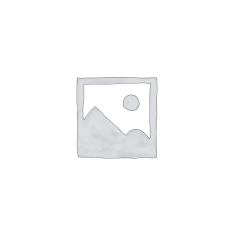Description
Groundwater is the major source of water used in the selected study areas of this research, which most of them relied on it to meet their ever-growing water demand. This work was carried out to study the quality of water from three (3) sources: sachet water, borehole water and well water. The physic-chemical properties of thirty (30) samples, consisting of 10 each for borehole, wells and sachet water within the selected study areas were assessed. Result obtained from the laboratory were compared with the standard limit specified by WHO (World Health Organisation).
The result of the physio-chemical indicated that well and water sample have their pH values far below the World Health Organisation (WHO) standard limit. The TDS for well water was found to be above the standard WHO value. The total hardness arising from the calcium and magnesium salt/ions contents of the three water samples were found to be below WHO set values. All other analyzed parameters were within the permissible limit given by the WHO. It is recommended that water from borehole and well sources in the settlements should be treated before supplying to the public for consumption or consumers need to treat the water by themselves before consumption to minimize possible occurrence of waterborne diseases.
TABLE OF CONTENTS
COVER PAGE
TITLE PAGE
APPROVAL PAGE
DEDICATION
ACKNOWLEDGEMENT
ABSTRACT
CHAPTER ONE
INTRODUCTION
1.1 BACKGROUND OF THE STUDY
- STATEMENT OF THE PROBLEM
- AIM/OBJECTIVE OF THE STUDY
- RESEARCH QUESTION
- SIGNIFICANCE OF THE STUDY
- SCOPE OF THE STUDY
- LIMITATION OF THE STUDY
CHAPTER TWO
LITERATURE REVIEW
- OVERVIEW OF WATER
- OVERVIEW OF THE STUDY
- CHARACTERISTICS OF WATER
2.3.1 Physical Characteristics of Water
2.3.2 Temperatures
2.3.3 Turbidity
2.3.4 Conductivity
- CHEMICAL CHARACTERISTICS OF WATER
2.4.1 TOTAL HARDNESS
2.4.2 INORGANIC NUTRIENTS
2.4.3 CATION
2.5 REVIEW OF WATER SUPPLY
2.6 REVIEW OF GLOBAL ACCESS TO CONSTANT CLEAN WATER
2.7 SERVICE QUALITY OF CONSTANT WATER SUPPLY
2.8 WATER SUPPLY AND SANITATION IN NIGERIA
2.9 Water sachet
2.10 WELL WATER
2.11 BOREHOLE WATER
2.12 WHO DRINKING WATER SPECIFICATIONS
2.13 QUALITIES OF GOOD DRINKING WATER
CHAPTER THREE
3.0 MATERIALS AND METHODS
- STUDY AREA
- SAMPLE COLLECTION
- PHYSICAL ANALYSIS TEST FOR COLOUR
- DETERMINATION OF TEMPERATURE
- SAMPLE ANALYSIS
- Determination of hardness of the samples
- Determination of pH
- Determination of Total dissolved solids (TDS)
- Determination of Turbidity
- Determination of chlorine and nitrate
- STATISTICAL ANALYSIS
CHAPTER FOUR
4.1 RESULT AND DISCUSSION
CHAPTER FIVE
- CONCLUSION
- RECOMMENDATION
REFERENCES
CHAPTER ONE
1.0 INTRODUCTION
1.1 BACKGROUND OF THE STUDY
Water is the major consumable substance upon which every living creature depends on for their survival. Water is so essential for human beings for their day to day activities such that they cannot do without using or drinking water.
Water is one of the major needs of human being which plays vital roles in the existence of human being and its economy such as in forestry, fisheries, power generation, and livestock production. Sourcing of adequate water supply is the major requirement for a vigorous life.
The quality of water is determined by the chemical, physical and biological properties of such water in connection to its uses and the required standard. The deterioration of water can occurred from its point source or non-point sourced pollution. Water deterioration due to point source is such that originated from industrial discharge or industrial affluent and municipal waste, while non-point source includes agricultural waste, dumping of waste in streams and rivers.
Water contamination or water borne disease is the major cause of mortality, most especially among children in developing countries such as Nigeria. In many subsistent economies, water borne disease is a significant economic constraint.
Basically, drinking water is derived from two sources: i. surface water – such as rivers and reservoirs. ii. Underground water. Portable and safe water was introduced in the 19th century when it was discovered that most epidemic were related to contaminated water.
Naturally, all water contains inorganic contaminant which may arise from the geological strata through which water flows and to a varying level according to Awake Magazine (2023). Apart from inorganic contaminant there are possible sources of man-made contaminants, and some of which are more significant than others (Awake Magazine, 2023). Contaminants can come from discharges from industrial premises or from sewage treatment points. In order to determine if water is suitable for domestic, industrial for agricultural use, their physical, chemical and biological properties are considered.
The ground is said to be an excellent mechanism that filters out particulate matters like leave soil and bugs, still large dissolved chemicals can still occur in in a large proportion in a dug well thereby causing huge problems. In order word, water from dug well gets contaminated through the surface.
Petroleum hydrocarbon is another source of Organic pollutant which may visibly builds up in an environment, organic chemical, generally breakdowns with time in the environment but metals do not and easily accumulate and concentrated in the living systems.
Latrines and septic tanks are known as a significant source of water contaminants especially in well water. Industries can also give rise to water contamination particularly when chemicals are not properly handled.
Water contamination can also occur through a corroded iron during water distribution. When corrosion occurs in iron, it releases iron oxide. Diffusion which also occurs through a plastic pipe can give rise to unpleasant taste or dour problems.
Contamination of water can also occur in consumer’s premises from plumbing materials which can be lead or copper or from the back flow of liquid into the water distribution system.
Treatment of drinking water which is usually applied to the public water supplies consists of a series of barriers in a treatment which varies according to the requirement of the supply and vulnerability of the source which broadly comprise system for coagulation and flocculation, filtration and oxidation.
Random practice of waste disposal as well as indiscriminate disposal of excreter and human faeces in rivers and stream channels are another sources of water contaminants.
Air-bone disease such as cholera, typhoid, dysentery, skin and mental disorders are linked to polluted water that is consumed. This study is carried out analyse the physio-chemical properties of sachet water, borehole water, and well water sources consumed in Keteren Gwari, Kpakungu And Shiroro.
1.2 STATEMENT OF THE PROBLEM
Quality of drinking water consumed has been a major concern in many countries such in developing countries (like Nigeria). Polluted water when consumed may lead to different kind of water borne diseases such as typhoid dysentery, Cholera, skin and mental disorder. According to WHO, there is a guideline for the quality of water to be consumed by human being. The quality of water is based on the physical, chemical and biological characteristics of the water. Water can be polluted due to point source and non-point source pollution. Point source includes industrial discharges from municipal waste while that of non-point includes agricultural waste and indiscriminate dumping.
The aim of this work is to have a comparative analysis of sachet water, borehole water, and well water in some selected areas of Minna: a case study of Barikin Sale, Keteren Gwari, Kpakungu And Shiroro
1.3 AIM AND OBJECTIVES OF THE STUDY
The aim of this study is to compare the quality of sachet water, borehole water, and well water in some selected areas of Minna.
The objectives of the study are:
- To study the quality of sachet water, borehole water, and well water sources consumed in Keteren Gwari, Kpakungu And Shiroro.
- To ensure that water sourced from sachet water, borehole water, and well water are safe for human consumption.
- To ensure that the quality of water sourced from the three sources meet the guideline for quality of water to be consumed by human being according to World Health Organization (WHO).
- To analyse the physio-chemical properties of sachet water, borehole water, and well water sources consumed in Keteren Gwari, Kpakungu And Shiroro.
1.4 RESEARCH QUESTION
At the end of this research work student involved shall be able to provide answers to the following questions:
- What types of microorganisms are commonly found in sachet water, borehole water, and well water?
- What are the negative effects of consuming contaminated water?
- What is the guideline for quality of water to be consumed by human specified by World Health Organization (WHO)?
- How do you ensure that water sourced from sachet water, borehole water, and well water are safe for human consumption?
- What is the quality of sachet water, borehole water, and well water sources consumed in Keteren Gwari, Kpakungu And Shiroro?
- What are the physio-chemical properties of sachet water, borehole water, and well water sources consumed in Keteren Gwari, Kpakungu And Shiroro.
- What types of heavy metals are identified in water sourced from sachet water, borehole water, and well water.
1.5 SIGNIFICANCE OF THE STUDY
This study will serve as a means of determining the quality of sachet water, borehole water, and well water which are the major sources of water consumed in Keteren Gwari, Kpakungu And Shiroro.
The study will serve as a means of ensuring that water sourced from sachet water, borehole water, and well water are safe for human consumption in the selected case study.
The study will serve as an avenue for ensuring that the quality of water sourced from the three sources meets the standard or guideline for quality of water to be consumed by human being according to World Health Organization (WHO).
1.6 SCOPE OF THE STUDY
The scope of this work covers the analysis of the physio-chemical properties of sachet water, borehole water, and well water sources consumed in Keteren Gwari, Kpakungu And Shiroro. The quality of water from the sources will be determined. In the study, thirty water samples of sachet water, borehole water, and well water within the study area had their physio-chemical parameters assessed. At the end of the study, the laboratory result that will be obtained will be compared to the standard limit identified by WHO (World Health Organization).
1.7 LIMITATION OF THE STUDY
There are many other water sources microorganism can be identified, but in this study the analysis will be carryout for water sourced from Sachet water, well water and borehole from Keteren Gwari, Kpakungu And Shiroro.
CHAPTER FIVE
5.1 Conclusion
From the result gotten from the study, apart from the deficiency of magnesium and calcium, sachet water appears to be the best source of drinking water in the four selected areas.
This could be as a result of good treatment from those sachet water factories before their packaging, and sold to the populace.
However, it was detected that water sample from the from the wells and boreholes are slightly acidic and deficiency in magnesium and calcium are seen in addition to possessing high TDS (well water in this regard) thus may not be safe for human consumption unless requisite if require water treatment is carried out.
5.2 Recommendations
- It is recommended that further research be carried out periodically to ascertain the level of pollution of underground water in this location.
- Also, the study of the possible presence of heavy metal (Ag, Hg, Sn, Pb, Cd, Cr), composition and content in the groundwater samples should be carried out.
- There should be enforcement of environmental laws that will minimize indiscriminate waste disposal in order to mitigate flooding and likely pollution of underground water which serves as a major source of portable water in the studied area.
- Investigate the presence of water contaminants like chemicals, such as farmland inorganic fertilizers/manure, microbial and radiological materials etc in other to assess the overall water quality.
- Any further researches in the study area should be done continuously, for a longer period of times in order to obtain a set of data that will have a good reliability.

